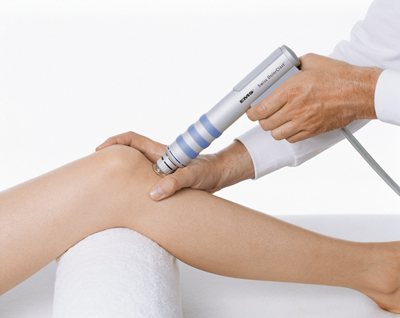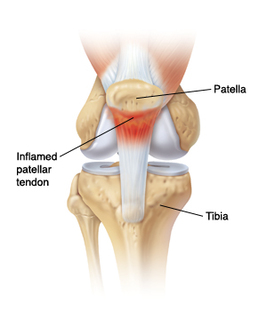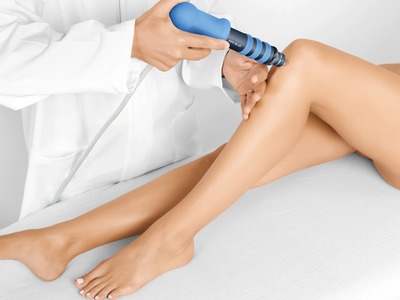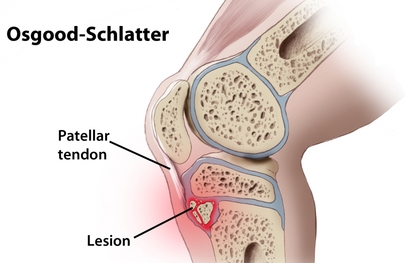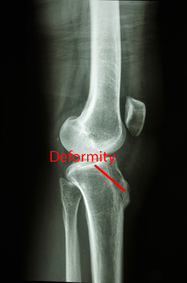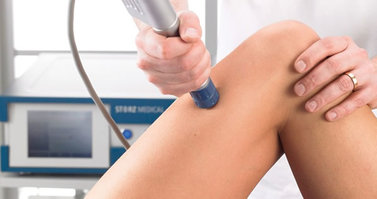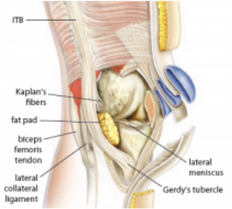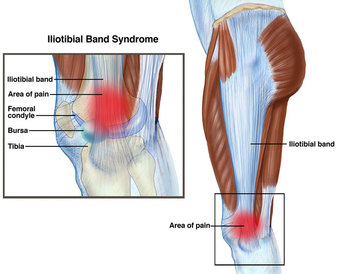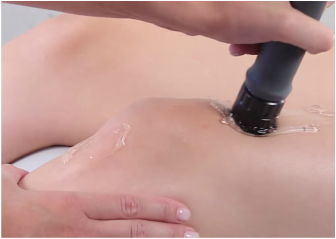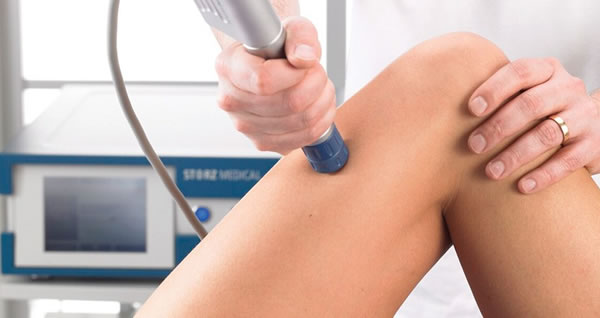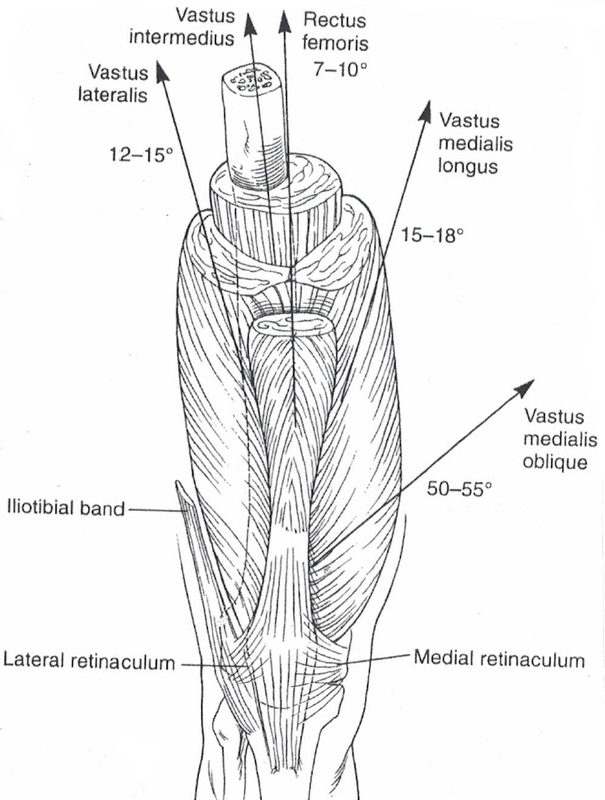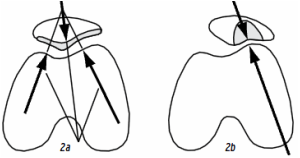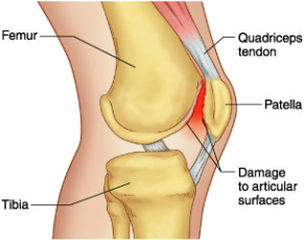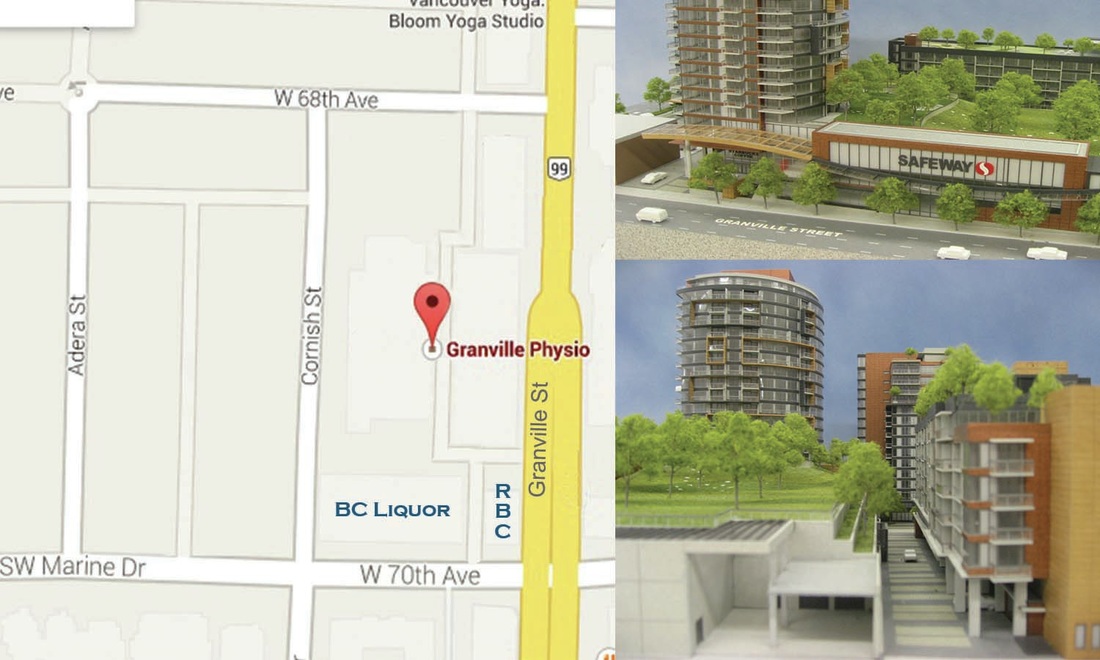KNEE AND THIGH CONDITIONS
Jumper's Knee (Patellar Tendinitis)
The patellar tendon is a short, wide band that connects the patella (kneecap) to the tibia (shinbone). A large amount of stress is placed on the patellar tendon during jumping or running activities, and this stress can lead to micro-damage and degeneration over time. If not properly treated it can result in a torn or ruptured patellar tendon.
A 2007 study in the American Journal of Sports Medicine followed up with patients 2 to 3 years after they had shockwave treatment or conservative treatment. The shockwave group reported the following breakdown of their current state: 43% excellent, 47% good, 10% fair, and none poor. In the conservative treatment group 0% excellent, 50% good, 25% fair, and 25% poor. Recurrence of symptoms occurred in 13% of the shockwave group and 50% of the conservative treatment group.
At Granville Physio your therapist can effectively use both methods for an even better outcome! They can use shockwave and teach you how to improve your arch mechanics, appropriately release and stretch the muscles of the thigh, strengthen the pelvis to obtain stability and reduce reliance on the quadriceps muscles, and potentially apply a supportive device such as a patellavator to the tendon and insoles to the feet.
A 2007 study in the American Journal of Sports Medicine followed up with patients 2 to 3 years after they had shockwave treatment or conservative treatment. The shockwave group reported the following breakdown of their current state: 43% excellent, 47% good, 10% fair, and none poor. In the conservative treatment group 0% excellent, 50% good, 25% fair, and 25% poor. Recurrence of symptoms occurred in 13% of the shockwave group and 50% of the conservative treatment group.
At Granville Physio your therapist can effectively use both methods for an even better outcome! They can use shockwave and teach you how to improve your arch mechanics, appropriately release and stretch the muscles of the thigh, strengthen the pelvis to obtain stability and reduce reliance on the quadriceps muscles, and potentially apply a supportive device such as a patellavator to the tendon and insoles to the feet.
Osgood Schlatter Disease
Most commonly occurring in young children and adolescents, Osgood Schlatter disease is an irritation of the outer bone covering (the periosteum) at the tibial tuberosity which results in excess bone growth due to growth spurts combined with tight muscles and excessive use. It is characterized by a large, tender bump that develops underneath the kneecap, and can result in pain during exercise or with contact. If not properly treated, this condition can cause lasting damage to growth plates.
With conservative treatment only, the pain can take as long as 2-3 years to fully dissipate. However, at Granville Physio, your therapist can use Shockwave therapy to help accelerate the healing process and get you back to normal, pain-free activity sooner! The International Journal of Advanced Research in Biological Sciences published a study in 2014 highlighting the effectiveness of Shockwave therapy for the treatment of Osgood Schlatter disease. The study found significant improvements in severity of knee pain and mobility of the knee with Shockwave therapy, compared to stretching and IFC treatment alone!
With conservative treatment only, the pain can take as long as 2-3 years to fully dissipate. However, at Granville Physio, your therapist can use Shockwave therapy to help accelerate the healing process and get you back to normal, pain-free activity sooner! The International Journal of Advanced Research in Biological Sciences published a study in 2014 highlighting the effectiveness of Shockwave therapy for the treatment of Osgood Schlatter disease. The study found significant improvements in severity of knee pain and mobility of the knee with Shockwave therapy, compared to stretching and IFC treatment alone!
Iliotibial Band Syndrome
The iliotibial (IT) band is the large band of fascia that runs down the lateral (outer) edge of the thigh. It connects from the hip to the knee, and is extremely important in the stabilization and movement of the knee joint. Iliotibial band syndrome (ITBS) is a common overuse injury, and often manifests in runners, hikers, and cyclists.
Rather than friction causing irritation of the ITB, it is now thought that compression of the associated fat layer (seen in the middle picture) is the main culprit. This fat is full of small blood vessels and nerves (Pacinian corpuscles) which makes it a far more likely suspect as the pain generating structure in ITB syndrome. The reasons for excessive compression are excessive tightness of the outside quadraceps (usually from weak pelvic stability), tightness of the tensor fascia latte, and tightness of the gluteus maximus.
Most commonly, the symptoms of ITBS are swelling and pain on the outside, upper edge of the knee. This is especially notable when walking down stairs or running downhill. If left untreated, the condition can become chronic. Traditionally, prescribed treatment is ice, elevation, and unfortunately, an extended rest from the aggravating activities.
At Granville Physio, your therapist can use shockwave therapy to target the IT band and associated tight muscles, accelerating the healing of the irritated fascia and fat pad. Additionally, we can teach you how to improve your arch mechanics, appropriately release and stretch the muscles of the thigh, strengthen the pelvis to obtain stability and reduce reliance on the quadriceps muscles, and potentially apply insoles to the feet.
Rather than friction causing irritation of the ITB, it is now thought that compression of the associated fat layer (seen in the middle picture) is the main culprit. This fat is full of small blood vessels and nerves (Pacinian corpuscles) which makes it a far more likely suspect as the pain generating structure in ITB syndrome. The reasons for excessive compression are excessive tightness of the outside quadraceps (usually from weak pelvic stability), tightness of the tensor fascia latte, and tightness of the gluteus maximus.
Most commonly, the symptoms of ITBS are swelling and pain on the outside, upper edge of the knee. This is especially notable when walking down stairs or running downhill. If left untreated, the condition can become chronic. Traditionally, prescribed treatment is ice, elevation, and unfortunately, an extended rest from the aggravating activities.
At Granville Physio, your therapist can use shockwave therapy to target the IT band and associated tight muscles, accelerating the healing of the irritated fascia and fat pad. Additionally, we can teach you how to improve your arch mechanics, appropriately release and stretch the muscles of the thigh, strengthen the pelvis to obtain stability and reduce reliance on the quadriceps muscles, and potentially apply insoles to the feet.
Patella Femoral Stress Syndrome (chondromalacia patella)
Patella tracking pain occurs when the patella (knee cap) does not move in its proper position. The patella has an optimal range of function, gliding over a groove in the femur (thighbone). When imbalances in the knee joint occur, from factors such as asymmetrically tight muscles or inflamed ligaments, the patella can be pulled off of this tracking. As seen in the diagrams above, abnormal tracking results in a redistribution of the compressive forces experienced within the knee joint, causing arthritic changes to the thin layer of articular cartilage on both the under surface of the patella and the femoral condyle.
Symptoms include:
At Granville Physio, your therapist can use shockwave therapy to target the outside thigh and associated tight muscles accelerating the lengthening of the outside quadriceps muscles and fascial tissue. Additionally, we can teach you how to improve your arch mechanics, appropriately release and stretch the muscles of the thigh, strengthen the pelvis to obtain stability and reduce reliance on the quadriceps muscles, and potentially apply insoles to the feet.
Symptoms include:
- burning pain in the front of the knee, especially when squatting, jumping, kneeling
- the sensation that the knee is buckling, or cannot support weight
- catching, clicking, grinding, or popping in the kneecap when the joint is manipulated
- pain when sitting or having the knee joint in a bent position
At Granville Physio, your therapist can use shockwave therapy to target the outside thigh and associated tight muscles accelerating the lengthening of the outside quadriceps muscles and fascial tissue. Additionally, we can teach you how to improve your arch mechanics, appropriately release and stretch the muscles of the thigh, strengthen the pelvis to obtain stability and reduce reliance on the quadriceps muscles, and potentially apply insoles to the feet.
